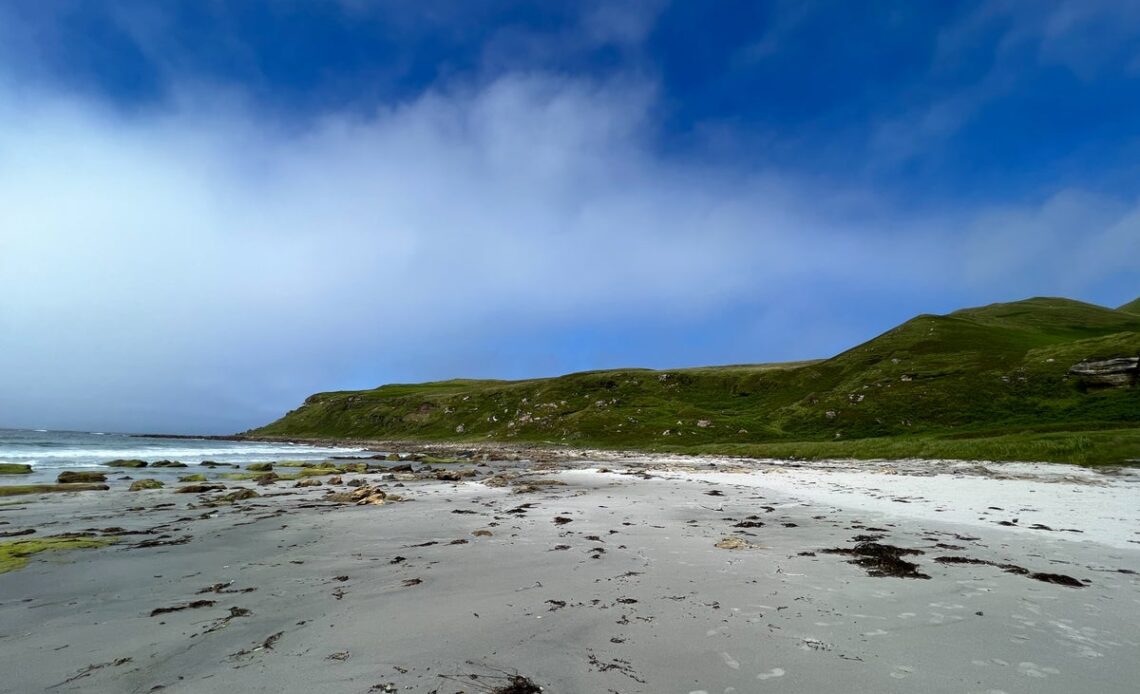“Everything good that has happened on Eigg since the community buyout has happened because of it,” says Stuart Paul McCarthy of Eigg Brewery, as he proudly shares Scotland’s first co-operative brewery.
“Everything good” includes becoming the world’s first green electricity self-sufficient island, and this year’s new An Laimhrig community hub. Welcome to the UK’s greenest isle, where they’re now welcoming visitors as “temporary residents”, rather than tourists.
Eigg’s renaissance over the last quarter of a century since the buyout belies a past blighted by tragedy and hardship. This wildscape of vaulting pitchstone lava mountain, sweeping Atlantic beach and savage coast is haunted by the baleful days of internecine clan warfare – in the Massacre Cave alone, 400 souls perished – and the disastrous 19th century Highland Clearances, when whole communities like Grulin were wiped off the map.
Eigg is a community-owned island
(Robin McKelvie)
Had it not been for the community buyout in 1997, Eigg may just be bumbling along like many of the Hebrides, ruled by a succession of – at best – questionable landlords. Instead, under the stewardship of the Isle of Eigg Heritage Trust – and their subsidiaries Eigg Trading, Eigg Electric and Eigg Construction – the population is on the rise (solidly above 100), as people from all over the UK and further afield are drawn to Eigg’s community-driven way of life.
This inclusive spirit extends to visitors. “We don’t see visitors to our island as just tourists,” says Lucy Conway, as we tuck into local mussels in the Galmisdale Bay cafe in the new community hub of An Laimhrig. “It’s more about being a ‘temporary local’, helping put money directly into the community, with respect both ways.” Conway is a director of the new SCOTO (scoto.co.uk) initiative that aims to not just forge links between Scotland’s communities but also “show how community-owned and managed tourism facilities can work alongside family businesses, sole traders and larger businesses.”
An Laimhrig is a shining example. Working with visionary architects and island veterans WT Architecture – whose mantra is “Architecture. Place. People” – they’ve created a clean, green hub. Think light and space, sparkling ocean reflecting through floor-to-ceiling windows; local wood abounds. The new Taigh Nighe wash house sports 100 per cent green electricity showers (£2 contactless), as well as information on…
Click Here to Read the Full Original Article at The Independent Travel…
